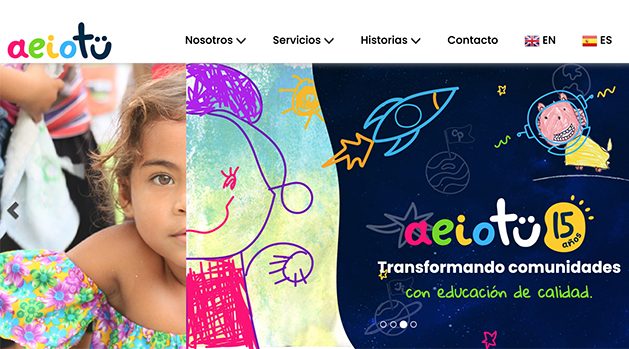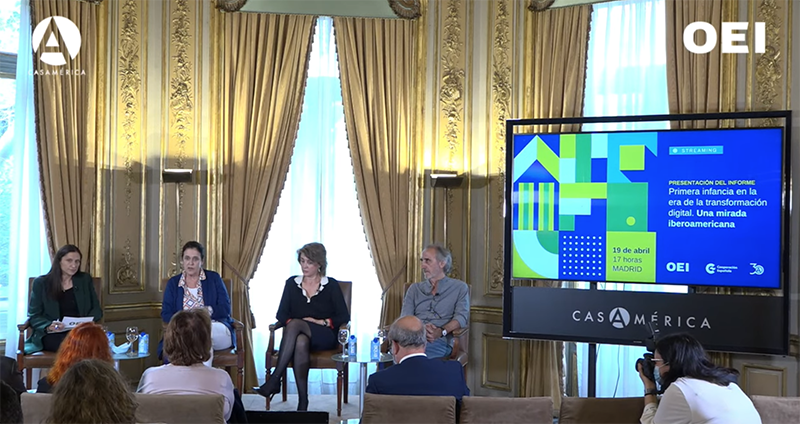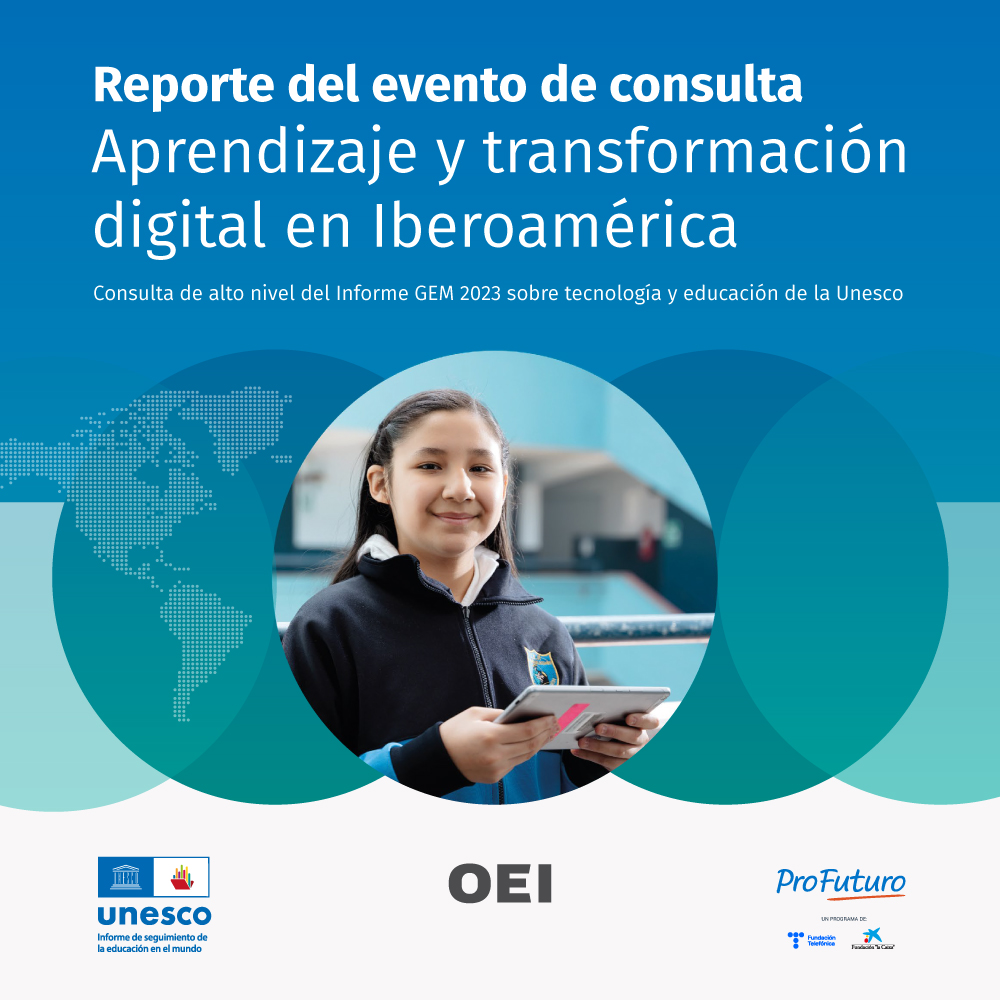According to UNICEF, in the year 2019, some 175 million children aged 3 to 6 in the world lacked access to formal education. Moreover, in the case of Latin America, according to a report developed by UNESCO, ECLAC and UNICEF in the same year, the gross enrolment rate in early childhood (2-5 years) was 46.6%, which meant that less than half of the children had access. This situation is critical, considering the importance of education in the social, cognitive and emotional development of children, as already recognised by Jean Piaget in the 1980s.
To address this alarming lack of access to early childhood to early childhood education, some innovative pedagogical initiatives have been developed. Among these is the proposal promoted by the Colombian social enterprise AeioTu inspired by the Reggio Emilia educational philosophy of the Italian teacher and pedagogue Loris Malaguzzi, which is combined with the use of digital technologies as a means of building education community. In this article we talk about it.
AeioTu is a proposal inspired by the Reggio Emilia educational philosophy that relies on technology to build educational communities in an innovative and sustainable way.
Children at the centre of learning
Loris Malaguzzi’s proposal was developed after the Second World War, giving rise to the Reggio Emilia educational model. There, the main point of innovation lies in the role given to children in the educational process, recognising that they are capable of generating their own learning. In this way, and according to Malaguzzi himself, education provision should focus on creating the conditions for children to use their knowledge autonomously.
In Colombia, 50% of children under five do not receive quality comprehensive care. Therefore, they do not develop the necessary skills to change the course of their lives. Inspired by the Reggio Emilia educational philosophy and adapting it to the peculiarities of the context in which they develop their activity, aeioTU was born in 2008 as an innovative school model that provides high quality early childhood development for children under the age of five. Its educational method is based on creativity and discovery through art, play and exploration, where the child is at the centre of the learning process. Its purpose is to build innovative and sustainable educational communities by developing the potential of early childhood, so that children become competent, creative citizens and builders of society.
AeioTu operates through four strategic lines: its own nurseries and centres in which its educational model is applied directly; the AeioTu Network, a social learning community; consultancies and projects through which they accompany other centres to improve their knowledge and experience; and, finally, their line of Advocacy and Incidence through which they mobilise multi-sectoral groups to diagnose and prioritise strategies to ensure early childhood development.

The educational experience developed by AeioTU has reported promising results so far. Over the past 15 years, the organisation has impacted more than 457,000 children, improved the skills of nearly 32,000 teachers, and influenced the parenting practices of more than 377,000 families. According to a longitudinal study carried out jointly by the Universidad de los Andes (Colombia) and the National Institute for Early Education Research of Rutgers University (USA), there are statistically significant benefits of implementing this type of methodology in nurseries in vulnerable contexts. Based on the results, it would be possible to affirm that children who attend aeioTU nurseries have a richer linguistic development, have higher levels of expressive language use and achieve greater cognitive development compared to children of the same age who live in similar socio-cultural contexts and do not attend nursery.
Over the past 15 years, the organisation has impacted more than 457,000 children, improved the skills of nearly 32,000 teachers and influenced the parenting practices of more than 377,000 families.
Early childhood education with technology
The aeioTU proposal is not restricted to face-to-face experiences in nurseries. Over the years, it has also developed a range of digital services that have allowed it to expand its reach and address new challenges. These were devised prior to the COVID-19 pandemic, but were circumstantially strengthened by the constraints of confinement.
The first record of aeioTU’s technology-based innovation was in 2012, with the creation of the “ConecTU” software, a tool for monitoring children’s development. It allows the teacher to analyse each child, individually or in comparison with others of the same age, in order to promote experiences that strengthen all dimensions of the child’s development.
In 2020, they moved forward with the creation of their first e-learning platform, “Aprendiendo” (Learning), a pilot experience that aimed to be a self-management tool to help educators working in the nurseries to continue strengthening the educational model. With the knowledge gained through the project, the foundations were laid for the “aeioTU Network”, a platform launched in 2021 under a social learning community approach and which has more than 2,500 free contents, 41 courses and two diploma courses. According to Nehyi Quintero, digital director of the institution, they seek to generate “a platform where a community is created around early childhood and where people can interact with each other, solve challenges and co-create social fabric”.
Currently, the platform also has content developed to generate interaction processes between adults and children. In this regard, Nehyi stresses: “There are more than 200 recorded stories (…) to encourage interaction between adults and children, so that there is a moment when we sit down, listen to the story and then build new versions of these stories”. This element is key, as technology would become a tool to strengthen children’s development, generating meaningful interactions, as well as encouraging creative thinking and problem-solving.
aeioTu: the best of each world
The use of digital technologies in early childhood paves the way for expanding today’s learning vehicles, enabling them to broaden their reach and promoting the sharing of practical knowledge among early childhood ecosystems. The actions promoted by the “aeioTU Network” involve not only access to a whole digital learning system, but also enable the exchange of knowledge. In the words of its executive director, María Adelaida López, “it is an excellent way to reach not only educators, but also leaders and the entire early childhood ecosystem in the region”.
For this leader, it is necessary to move towards a hybrid education, which allows the benefits of both worlds to be harnessed: “We need to deconstruct the scenarios where learning takes place, to bring a high-quality model, with different methodologies and experiences, to diverse environments”.
The inspiration in the educational philosophy of Reggio Emilia serves as a theoretical underpinning to promote a new way of learning within the classroom, where technologies are a means and an opportunity to realise its potential, always recognising the importance of the educational community.
The case of aeioTU is an example of how the effective use of technological devices can improve early childhood education, advancing along a path of construction and articulation in which technology is placed at the service of the community. The inspiration in the educational philosophy of Reggio Emilia serves as a theoretical underpinning to foster a new way of learning within the classroom, where technologies are a means and an opportunity to realise its potential, always recognising the importance of the education community. To avoid the potential negative consequences of unaccompanied adult technology use, it is the responsibility of managers, educators and caregivers to place children at the centre of the learning process, using digital technologies as a catalyst for this new knowledge.






